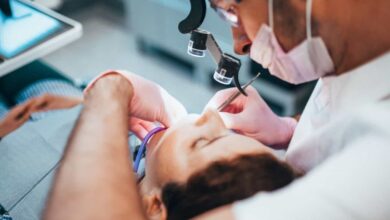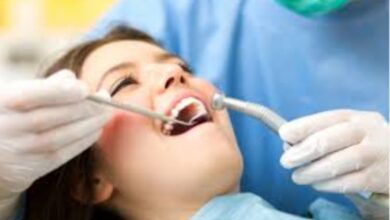Achieve a Dazzling Smile: The Ultimate Guide to Teeth Whitening in Springfield
If you’re looking to brighten your smile, you’ve come to the right place. Teeth whitening in Springfield is a popular choice for many who want to enhance their appearance and boost their confidence. Over time, our teeth can become stained for various reasons, but thankfully there are effective ways to restore their natural shine. In this guide, we’ll cover everything you need to know about teeth whitening, from understanding discoloration to choosing the right treatment for your needs.
- Understanding Tooth Discoloration
- Professional Teeth Whitening Options
- Are You a Candidate for Teeth Whitening?
- Maintaining Your Bright Smile
- Choosing the Right Dentist in Springfield
- Cost Considerations for Teeth Whitening
- Natural Alternatives to Professional Whitening
- Final Thoughts on Achieving a Bright Smile
- Frequently Asked Questions
Key Takeaways
- Teeth can become discolored due to diet, aging, and lifestyle habits.
- Professional whitening options include in-office treatments and take-home kits.
- Consulting a dentist is crucial to determine if you’re a good candidate for whitening.
- Maintaining your white smile requires proper care and regular dental visits.
- Natural alternatives exist, but they may not be as effective as professional treatments.
Understanding Tooth Discoloration
Before we jump into how to get those pearly whites shining, it’s important to understand why teeth lose their luster in the first place. It’s not just about skipping brushing (though that definitely doesn’t help!). There are several factors at play, and knowing them can help you make smarter choices about your oral health and teeth whitening in Springfield, MO.
Common Causes of Staining
So, what makes teeth go from bright to blah? A bunch of things, actually. Think of your teeth like a white t-shirt – they’re easily stained by what you eat and drink. Dark liquids are some of the biggest culprits.
- Coffee and tea: These morning staples can leave a yellowish tint over time.
- Red wine: A known offender, thanks to its dark pigments.
- Soda: Especially dark-colored ones, can contribute to staining.
But it’s not just drinks. Certain foods, like berries and sauces, can also cause discoloration. Poor oral hygiene is another major factor. When you don’t brush and floss regularly, plaque builds up, leading to yellowing and even more serious problems.
Impact of Lifestyle Choices
Our daily habits play a huge role in the color of our teeth. Smoking, for example, is a major no-no. The nicotine and tar in tobacco products are notorious for causing stubborn yellow or brown stains. It’s one of the fastest ways to dull your smile. Also, think about how often you brush and floss. If you’re slacking, you’re basically inviting stains to set in. Here’s a quick rundown:
- Smoking: Causes significant and difficult-to-remove stains.
- Poor Oral Hygiene: Allows plaque and tartar to accumulate, leading to discoloration.
- Diet: Frequent consumption of staining foods and drinks accelerates discoloration.
It’s easy to underestimate how much our lifestyle affects our teeth. Small changes, like quitting smoking or being more diligent about brushing, can make a big difference in the long run. It’s about building good habits and being mindful of what you’re putting in your mouth.
The Role of Aging in Discoloration
Unfortunately, even if you have perfect habits, time can still take its toll. As we age, the outer layer of our teeth (enamel) naturally wears down. This exposes the underlying layer called dentin, which is naturally more yellow. So, even without stains from food or drinks, your teeth can appear less white as you get older. It’s just a natural part of the aging process. While we can’t stop time, we can take steps to minimize the effects of aging on our smile. Regular dental checkups and professional teeth whitening can help keep your teeth looking their best, no matter your age.
Professional Teeth Whitening Options
When you’re thinking about teeth whitening in Springfield, you’ll probably run into two main ways to get it done: going to the dentist’s office or using a kit at home. Both can really brighten your smile, but they work a bit differently.
In-Office Whitening Benefits
In-office whitening is like getting a super-fast makeover for your teeth. The dentist uses a strong whitening stuff and sometimes a special light to make it work even better. Here’s why people pick this option:
- It’s quick. You can often get it done in one visit, usually in about an hour or so.
- The results are pretty amazing right away. Your teeth can get several shades lighter in just one go.
- A dentist is there to make sure everything is safe and goes smoothly. They know how to handle things if your teeth get sensitive.
- The dentist can tailor the strength of the treatment to what your teeth need, so you get the best results without overdoing it.
I remember when my sister got her teeth whitened at the dentist. She was nervous about sensitivity, but the dentist took great care of her. She was so happy with the results, and it really boosted her confidence.
Take-Home Whitening Kits
With take-home kits, the dentist gives you custom trays and a special whitening gel. You use these at home, following their instructions. It’s more of a gradual process, but it still works well. Some things to consider:
- You do it on your own time, which can be easier if you’re busy.
- It usually takes a week or two to see the full results.
- The dentist makes sure the trays fit your teeth perfectly, so the gel works right.
Comparing Effectiveness of Both Methods
So, which one is better? Well, it depends. In-office whitening is faster and gives you quick results. Take-home kits are more gradual and let you whiten your teeth when it’s convenient for you. Both can give you a brighter smile, but it’s a good idea to talk to your dentist to see which one fits your needs and lifestyle best. They can help you figure out the best way to get professional teeth whitening for your situation.
Are You a Candidate for Teeth Whitening?
So, you’re thinking about getting your teeth whitened? That’s awesome! But before you jump in, it’s important to figure out if you’re actually a good candidate. Not everyone is, and it’s better to know beforehand to avoid disappointment or, worse, damaging your teeth. Let’s break it down.
Assessing Your Dental Health
First things first: your overall dental health matters a lot. If you’ve got untreated cavities, gum disease, or exposed roots, whitening might not be the best idea right now. Whitening agents can irritate these conditions, making them worse. Think of it like painting a house – you wouldn’t paint over rotten wood, right? You’d fix the foundation first. Same goes for your teeth. A dentist will need to check your teeth for oral health issues before recommending any whitening treatment.
- Check for cavities and get them filled.
- Address any gum disease with a professional cleaning and treatment plan.
- Talk to your dentist about any sensitivity issues you might have.
It’s really important to have a solid foundation of dental health before you even consider whitening. Otherwise, you’re just putting a band-aid on a bigger problem, and you could end up causing more harm than good.
Understanding Stain Types
Not all stains are created equal. Some stains respond really well to whitening treatments, while others are more stubborn. Generally, yellow and brown stains caused by food, drinks, or aging are easier to remove. Grayish stains, or those caused by certain medications (like tetracycline), are often more difficult to treat. These are called intrinsic stains. The type of stain you have will influence the kind of whitening treatment that’s best for you, and how effective it will be.
- Extrinsic stains (surface stains) are usually easier to remove.
- Intrinsic stains (deeper stains) may require more aggressive treatment or may not respond as well.
- Your dentist can help you identify the type of stains you have.
Consultation with a Dentist
Seriously, don’t skip this step! A consultation with a dentist in Springfield is crucial. They can evaluate your dental health, determine the type of stains you have, and recommend the best whitening option for you. They can also discuss any potential risks or side effects, and answer any questions you might have. Plus, they can manage your expectations, so you know what kind of results to expect. Think of it as getting a professional opinion before making a big decision. It’s always better to be safe than sorry!
- Get a professional evaluation of your dental health.
- Discuss your whitening goals and expectations.
- Learn about the different whitening options available and their potential risks and benefits.
Maintaining Your Bright Smile
So, you’ve gone through the teeth whitening process. Awesome! Now, the real work begins: keeping that smile sparkling. It’s not just about the initial treatment; it’s about building habits that protect your investment. Think of it like this: you wouldn’t buy a fancy car and then never wash it, right? Same deal here.
Post-Whitening Care Tips
Okay, first things first. Right after whitening, your teeth are going to be a little sensitive. That’s normal. Stick to soft foods and avoid anything too hot or too cold for a day or two.
Here’s a quick rundown:
- Brush gently: Use a soft-bristled toothbrush. No need to scrub like you’re cleaning a grill.
- Use sensitive toothpaste: This will help with any temporary discomfort.
- Rinse with water after eating: Especially after foods that stain.
- Consider a fluoride rinse: This can help strengthen your enamel.
Foods to Avoid
This is where it gets tricky. Some of the best things in life can wreak havoc on your pearly whites. I’m talking about coffee, red wine, and dark berries. Basically, anything that can stain a white shirt can stain your teeth. But don’t despair! You don’t have to give up everything. Just be mindful. Maybe switch to clear aligners instead of coffee sometimes?
Here’s a list of the usual suspects:
- Coffee and tea
- Red wine
- Dark berries (blueberries, blackberries, etc.)
- Soy sauce
- Balsamic vinegar
- Tomato sauce
- Soda (especially dark-colored ones)
If you do indulge, rinse your mouth with water afterward. And maybe brush a little later, but not immediately, as the enamel can be temporarily softened after consuming acidic foods.
Regular Dental Check-Ups
This is non-negotiable. You need to see your dentist regularly. I’m talking every six months, or more often if they recommend it. They can catch problems early, before they become big, expensive problems. Plus, they can give you a professional cleaning that gets rid of plaque and tartar that you can’t reach at home. Think of it as preventative maintenance for your smile. Regular dental check-ups are key to maintaining a bright smile.
Maintaining a bright smile isn’t just about aesthetics; it’s about overall oral health. By following these tips and working with your dentist, you can keep your smile looking its best for years to come. It’s an investment in yourself, and it’s worth it.
Choosing the Right Dentist in Springfield
Finding the right dentist for your teeth whitening procedure in Springfield is a big deal. You want someone you trust, who understands your needs, and who can deliver the results you’re hoping for. It’s not just about the whitening itself, but also about the overall experience and care you receive.
What to Look for in a Dentist
Okay, so what makes a dentist “right”? Here’s a few things I’d consider:
- Experience with Teeth Whitening: Not all dentists focus on cosmetic procedures. Look for someone who does a lot of whitening and has a good track record.
- Up-to-Date Technology: Modern dental practices use advanced tools and techniques. This can mean more effective and comfortable treatments.
- A Good Listener: Your dentist should take the time to understand your goals and concerns. They should explain the process clearly and answer all your questions.
- Comfortable Environment: The office should be clean, welcoming, and make you feel at ease. If you’re anxious about dental visits, this is especially important.
Questions to Ask During Consultation
Before committing to any treatment, schedule a consultation. Here are some questions to ask:
- What whitening options do you offer?
- What results can I realistically expect?
- What are the potential side effects, and how do you manage them?
- How much will the treatment cost, including any follow-up appointments?
- Can you show me before-and-after photos of previous patients?
Reading Reviews and Testimonials
Online reviews can be super helpful, but take them with a grain of salt. Look for patterns – are people consistently praising the dentist’s skill and bedside manner? Are there recurring complaints about long wait times or unexpected costs? A mix of reviews can give you a balanced picture. Don’t rely solely on star ratings; read the actual comments to get a better sense of what to expect. Also, check out the dentist’s website for testimonials. These are usually positive, but they can still give you an idea of the types of results other patients have experienced.
Choosing a dentist is a personal decision. What works for one person might not work for another. Take your time, do your research, and trust your gut. A confident smile is worth the effort of finding the right professional to help you achieve it.
Cost Considerations for Teeth Whitening
Understanding Pricing Structures
Okay, let’s talk money. When you’re thinking about getting your teeth whitened, the price can be all over the place. It really depends on what you’re getting done. For example, a simple over-the-counter kit is way cheaper than going to the dentist for a professional treatment. Professional in-office whitening is usually the most expensive, but it also gives you the quickest and most noticeable results.
Here’s a rough idea of what you might pay:
- Over-the-counter whitening strips: $20-$50
- Custom whitening trays from your dentist: $300-$600
- In-office whitening (like Zoom!): $500-$1,000
Keep in mind that these are just estimates. Prices can change depending on where you live and the dentist you choose.
Insurance Coverage Options
Now, for the bad news: most dental insurance plans don’t cover teeth whitening. Why? Because they usually see it as a cosmetic procedure, not something that’s medically necessary. However, it never hurts to check with your insurance company. Sometimes, if the whitening is part of a treatment for a specific dental issue, they might cover a portion of the cost. It’s worth a shot to call them and ask!
It’s important to remember that investing in your smile is an investment in yourself. While insurance might not help, there are other ways to make teeth whitening more affordable.
Budgeting for Long-Term Care
So, you’ve got your teeth whitened. Awesome! But now you need to keep them that way. That means thinking about the long-term costs. Here are a few things to consider:
- Touch-up treatments: You might need to get your teeth whitened again every year or two to maintain the results.
- Whitening toothpaste: Using a good whitening toothpaste can help keep stains away.
- Regular dental cleanings: Getting your teeth professionally cleaned every six months is important for keeping your smile bright. Dental services can help maintain your smile.
Basically, keeping your smile dazzling takes a little bit of effort and a little bit of money. But if it makes you feel more confident, it’s totally worth it!
Natural Alternatives to Professional Whitening
Home Remedies for Teeth Whitening
Okay, so you’re thinking about skipping the dentist and trying to brighten your smile at home? I get it. Professional whitening can be pricey. There are a bunch of things people try, but it’s good to know what you’re getting into. Some common ones include baking soda, hydrogen peroxide, and even activated charcoal. The idea is that these things can help scrub away stains or lift them from your teeth. Just remember, natural doesn’t always mean harmless, so do your homework.
- Baking soda paste: Mix baking soda with a bit of water to make a paste. Brush gently.
- Hydrogen peroxide rinse: Dilute with water and swish. Don’t swallow!
- Oil pulling: Swish coconut oil in your mouth for about 15-20 minutes. Sounds weird, might help.
It’s important to remember that home remedies might not give you the same results as a professional treatment. They can be good for maintaining your smile, but if you’re looking for a dramatic change, you might be disappointed.
Effectiveness of Over-the-Counter Products
Walk down any drugstore aisle, and you’ll see tons of stuff promising a whiter smile. Whitening strips, toothpastes, mouthwashes… the list goes on. These products usually have lower concentrations of the active ingredients compared to what a dentist uses. That means they might take longer to work, and the results might not be as noticeable. Plus, there’s always a chance of uneven whitening or increased sensitivity. It’s a bit of a gamble, honestly. But if you’re on a budget, they can be worth a shot. Just read the labels carefully and don’t expect miracles.
Risks of DIY Whitening
Alright, let’s talk about the not-so-fun part. DIY whitening can be risky if you’re not careful. Overdoing it with abrasive stuff like baking soda or charcoal can actually wear away your enamel, which is the protective layer on your teeth. Once that’s gone, it’s gone for good. Also, some people have sensitive gums, and certain ingredients can cause irritation. If you have dental fillings, be extra cautious, as some whitening agents can affect them. And if you’re not sure about something, it’s always best to ask a dentist before you try it. Better safe than sorry, right?
Final Thoughts on Achieving a Bright Smile
Getting a bright smile is totally doable with the right teeth whitening options. Whether you choose to go for an in-office treatment or a take-home kit, you can expect some pretty amazing results that can really boost your confidence. If you’re thinking about brightening up your smile, reach out to a local dentist in Springfield to find out what works best for you. With their help, you can keep that smile shining for a long time. So, don’t wait—start your journey to a dazzling smile today!
Frequently Asked Questions
What causes my teeth to become discolored?
Teeth can get stained from things like coffee, tea, red wine, and smoking. Aging also plays a role, as enamel can wear down over time.
Is professional teeth whitening safe?
Yes, professional whitening is safe when done by a qualified dentist. They use special gels and equipment to minimize risks.
How long does the whitening process take?
In-office whitening usually takes about 60-90 minutes. At-home kits may take one to two weeks for full results.
Can anyone get their teeth whitened?
Most people can, but those with certain dental work or sensitive teeth should consult a dentist first.
How can I keep my smile bright after whitening?
Avoid foods and drinks that stain, practice good dental hygiene, and visit your dentist regularly for check-ups.
What are some natural alternatives to professional whitening?
Some people use baking soda or activated charcoal at home, but these methods can be less effective and may carry risks.




